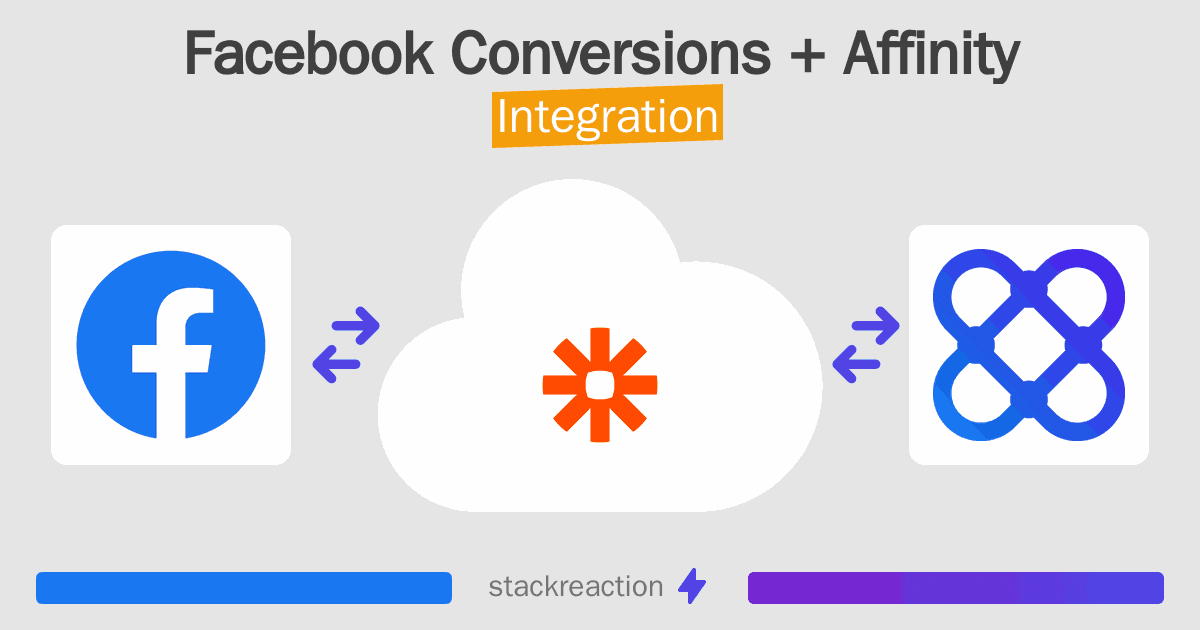How to connect Facebook Conversions and Affinity
Facebook Conversions and Affinity integration is available through Zapier, a workflow automation tool. With the combination of 2 Facebook Conversions triggers and 20 Affinity actions, you can create dozens of integration workflows to automate your work.
Workflow Automation Platforms supported by Facebook Conversions and Affinity
Want to automate the exchange of data between Facebook Conversions and Affinity without the hassle of coding? These workflow automation platforms make it possible. Explore this list to find the best fit for your business.
- Zapier. Zapier simplifies busy people's lives by automating web app data transfers, reducing tedious tasks, and allowing teams to collaborate effortlessly. With over 5,000 popular apps connected, it's never been easier to streamline your workflow.
- Pricing Options
- FreemiumFree Trial
- Starting From
- 30$/month
Facebook Conversions and Affinity Integration Price
When it comes to optimizing your workflow and streamlining tasks, integrating Facebook Conversions and Affinity can be seamlessly achieved using no-code or low-code automation tools. However, it is crucial to understand the pricing aspects.
We have gathered and organized pricing information for automation services that support Facebook Conversions and Affinity integration. Refer to the table below for details on pricing based on 100, 1K, 10K and 100K basic automations per month.
Basic automations encompass only one trigger and one action. Creating a task after someone fills out a form is a classic example of this.
| Automation Platform | 100 | 1K | 10K | 100K |
|---|---|---|---|---|
Volume: 100 Plan: Free $0 Volume: 1K Plan: Starter $58.5 Volume: 10K Plan: Professional $193.5 Volume: 100K Plan: Professional $733.5 | $0 Free | $58.5 Starter | $193.5 Professional | $733.5 Professional |
Triggers and Actions supported by Facebook Conversions and Affinity
Integrating Facebook Conversions and Affinity involves identifying an automation that aligns with your business request.
Automations are workflows that link your applications to fully automate repetitive tasks. A Trigger serves as the initiating event of an Automation, while an Action denotes the event executed by the Automation.
We've taken great care in collecting every available Trigger and Action from multiple Workflow Automation Platforms, enabling you to evaluate integration possibilities and make an informed decision on connecting Facebook Conversions and Affinity.
When this happens
Select a Trigger
Do this
Select an Action
How to setup Facebook Conversions and Affinity integration
Step 1: Use a Workflow Automation Service that is compatible with both Facebook Conversions and Affinity. Choose automation platform
60 seconds
60 secondsStep 2: Enable authentication for both Facebook Conversions and Affinity on the chosen automation platform
60 seconds
60 secondsStep 3: Select a Trigger for Facebook Conversions that will initiate your automation flow. Explore Triggers
15 seconds
15 secondsStep 4: Select a resulting Action for Affinity that will follow the Trigger event in your automation flow. Explore Actions
15 seconds
15 secondsStep 5: Configure the data that is exchanged between Facebook Conversions and Affinity.
120 seconds
120 secondsStep 6: Complete your integration by testing and publishing it. You're all set!
More integrations to Facebook Conversions
Take a look at the list of additional well-known Facebook Conversions integrations. Facebook Conversions Integrations
More integrations to Affinity
Explore our list of other popular Affinity integrations to find new automation scenarios. Affinity Integrations
Facebook Conversions and Affinity integration Diagram

Frequently Asked Questions
Does Facebook Conversions integrate with Affinity?
- You can connect Facebook Conversions and Affinity automatically using no-code Workflow Automation Tool. Use Zapier to link Facebook Conversions and Affinity.
Can you Integrate Facebook Conversions and Affinity for free?
- Yes, you can use the free plan of Zapier to connect Facebook Conversions to Affinity for free, albeit with some limitations.

